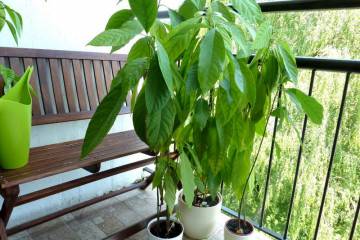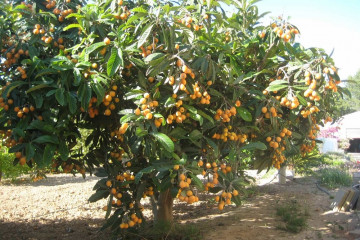How to grow a lemon tree from a seed at home
Content:
- Purchased lemon seed tree
- Stages of seed germination
- How to choose the fruit of the right ripeness and separate the seed
- Preparing a soil mixture for citrus plants
- Pot selection
- Lemon sprout watering mode
- Temperature regime for seedling growth
- Will seed-grown lemon bear fruit
- Lemon care at home
- Pests and diseases
A home garden can delight not only with fragrant flowers, but also with healthy fruits. On a windowsill, balcony or in a greenhouse, you can grow citrus plants with just seeds. To do this, you will need to buy several lemons at the nearest supermarket.
Purchased lemon seed tree
You can grow a lemon at home from freshly picked citrus seeds. They are selected from ripe fruits that do not show signs of disease (rot, black dots on the peel, unnatural color).
Store-bought lemons cannot be called freshly harvested, so seeds from several fruits are required. Of a dozen seeds, 3-4 sprouts will definitely be.
Flowers grown from seeds adapt to indoor conditions better than ready-made seedlings. The only drawback is that they bear fruit late.
Stages of seed germination
You can germinate a lemon seed immediately after extraction, but experienced citrus growers recommend removing the husk first. This must be done with a carefully disinfected clerical knife, since any injury can lead to the bone dying in the ground.
It is best to soak the seeds in clean water or rooting agent before planting. It can be bought at any garden-garden store.
How to grow a lemon tree from a seed at home:
- Remove the seeds from the lemon and rinse them under tap water.
- Take a 100 ml plastic cup. Use scissors to cut 6 drainage holes in it.
- Pour citrus soil into the pot.
- Water the substrate abundantly.
- Wait for excess water to drain.
- Insert the seed into the soil to a depth of 1.5 cm.
- Cover the top of the cup with cling film.
If the container for germination is more than 100 ml, it is recommended to put expanded clay, small stones or foam on the bottom before planting.
Once every 2-3 days, the substrate should be moistened with a spray bottle. If the soil becomes dry, it is better to water it. As soon as the first shoots appear, the film should be removed to avoid rotting of young leaves.
How to choose the fruit of the right ripeness and separate the seed
To obtain seeds, you should buy 4 ripe bright yellow lemons from the store. You can remove the bones as follows:
- Cut the lemon in half.
- It is better to throw out damaged seeds.
- Get whole seeds.
- Rinse the seeds thoroughly under running water to remove any remaining pulp.
From each lemon, you need to take 2-3 large seeds. The more seedlings, the higher the chance of getting a healthy fruit-bearing tree.
Preparing a soil mixture for citrus plants
The soil for citrus plants should be light, loose and highly nutritious. The soil from the garden or garden will not work, since when it gets wet it becomes dense.
Popular homemade soil mix recipes:
- Mix humus, leafy earth and sod in equal proportions. Then add river sand (10% of the total mass) and 150 g of superphosphate in granules. Mix the resulting mixture thoroughly.
- Sod, dung, leafy soil, sand and charcoal (2: 1: 3: 1.5: 0.5).
- Sod and leafy soil, manure, river sand. For seedlings - 2: 1: 1: 1, for adults - 3: 1: 1: 1.
If possible, it is better to buy a special soil for citrus plants.
Pot selection
Clear plastic cups are ideal for germinating seeds. They allow you to control the growth of the root system.
Once the lemon shoot reaches 10 cm in height, it can be transplanted into a permanent pot. The planting container must meet the following requirements:
- Drainage holes. It is worth choosing a pot with a lot of holes to drain excess water. Lemon in a pot with drainage holes will not rot.
- Suitable pot size. It is recommended to choose a flowerpot, the girth of which is equal to the height of the plant. Saplings are planted in a flowerpot with a diameter of 10-15 cm.
- Quality materials. Lightweight plastic pots are ideal for small to medium sized plants. If the decorative lemon is 1 m or more, it is better to choose a clay or wooden pot.
Before using old pots, they must be cleaned of salt deposits and disinfected with an alcohol solution (can be replaced with peroxide).
Lemon sprout watering mode
The correct watering method depends on the indoor humidity and temperature. Indoor seed lemon at home needs moderately moist soil. To determine if the flowerpot needs watering, you will need to insert your finger into the soil 2-3 centimeters. If the substrate is dry, the tree needs to be watered. Lemongrass is watered every 4 days.
For irrigation, it is better to use rainwater or settled water. It can be prepared this way:
- Boil tap water for 30 minutes.
- Cool and leave for 3-5 days.
- Pour the water gently into another container.
Water the lemon until water appears in the pan. Excess can be removed after 40 minutes.
Temperature regime for seedling growth
Indoor citrus fruits do not tolerate sharp fluctuations in temperature. A window open in winter can cause all the leaves to fall off.
In the spring, when all plants begin to bloom, the lemon should be kept at a constant temperature of +14 to + 18 ° C. It is not recommended to take seedlings out into the open air.
In winter, the air temperature should be 14-16 ° C. When the heating is running, it is better to spray the bush with settled water every day.
In summer, citrus can be placed outside or on a balcony if it will not be exposed to direct sunlight.
Will seed-grown lemon bear fruit
Citrus fruits grown from seed can also bear fruit. However, for this they need 10-15 years.
After grafting, the crop appears in 1-3 years (depending on the growing conditions and the variety of lemon). It is recommended that you practice to complete this procedure correctly.
How to plant lemon
Grafting is one of the methods of artificial vegetative propagation of plants. The method involves the engraftment of a cuttings or buds from one plant to another. In this case, it is not necessary that the varieties coincide.
You can plant a twig yourself, but it is better to ask an employee of a garden store about this.
For self-vaccination, you will need the following tools:
- cling film;
- grafting tape;
- secateurs and grafting knife;
- damp cloth;
- scion from a fruiting tree.
Before starting work, you must thoroughly wash your hands, and then sterilize the instruments with medical alcohol.
You can plant a seedling as soon as it reaches a height of 20 cm:
- Thoroughly wipe dust off the trunk of the lemon.
- With pruning shears, remove the shoot at a height of 10 cm from the substrate.
- Take a twig from a fruiting lemon and carefully cut off the "heel", removing the leaf plate.
- Make a vertical cut of the bark on the resulting hemp (without touching the core).
- Insert the graft into the formed recess. All movements must be careful not to damage parts of the plants.
- Cover the vaccination site with grafting tape and cling film. It is important to leave the stem of the leaf outside.
If after 2-3 days the stem falls off - the inoculation is successful, if it dries up - the procedure should be repeated.
Lemon care at home
For the first 4 months, the plant needs timely watering and careful care. Fertilizers are not needed at this stage, but you can add means to strengthen the root system to the water.
Homemade lemon, how to care:
- Transplant once a year. Lime deposits will form on the soil and pot walls over time. So that it does not harm the plant, it is important to rinse the pot and replace the soil.
- Feed not earlier than 6 months after the appearance of the shoot. At the initial stages of formation, the plant does not need feeding, so you should not overload the soil with fertilizers.
- In the room where the lemon grows, the humidity should be above 40%.
The trick when caring for home flowers is UV light. These lamps can be purchased online and hung over the windowsill.
Pests and diseases
Pests of citrus plants - aphids, scale insects, spider mites, scale insects. It is easy to grow a lemon in a pot at home, but it is worth adhering to preventive measures:
- Spraying with Fitosporin. This medicine prevents root rot.
- Bathing in a warm shower. This type is prophylactically suitable for plants with a large crown and an age of 3 years. The water temperature should be 28 ° C.
- Regular rubbing of leaves. Dust from the leaves should be removed no more than 1 time per week. To do this, use a clean cotton pad and purified water.
Only a specialist can determine what is wrong with the plant. It is best not to treat citrus fruits on your own, as this can lead to wilting of the plant.
If you follow the temperature and watering rules, many problems can be avoided. The reward for your work will be organic lemon fruits from your own garden.





















